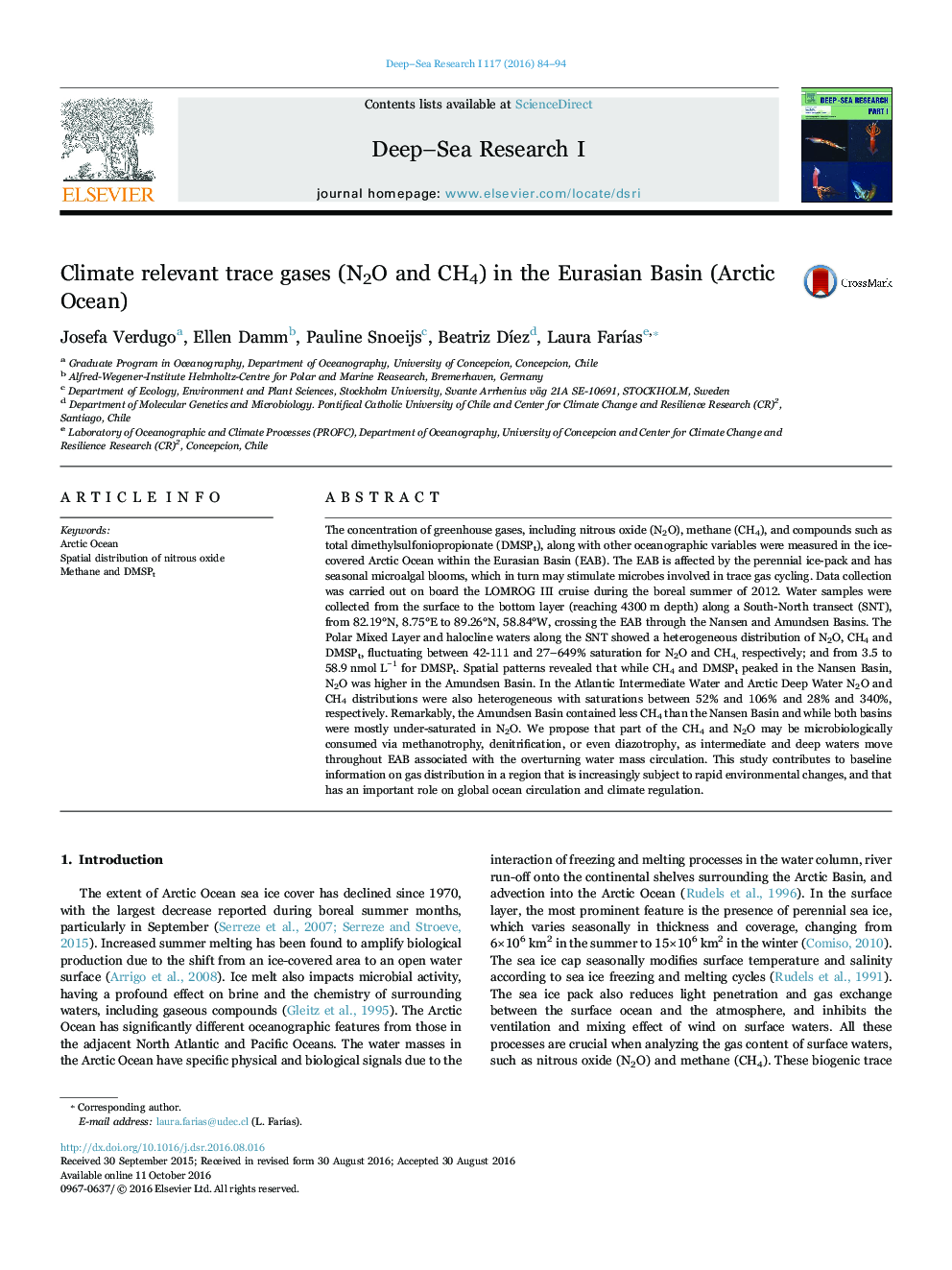| Article ID | Journal | Published Year | Pages | File Type |
|---|---|---|---|---|
| 4534378 | Deep Sea Research Part I: Oceanographic Research Papers | 2016 | 11 Pages |
•The surface layer shows high methane oversaturation (up to 649%) and light nitrous oxide oversaturation (up to 111%) due to microbiological production.•Methane oversaturation (up to 330%) was observed in intermediate and deep waters of the Nansen Basin, but strong under-saturation (30%) in the Amundsen Basin. Attributed to methane oxidation during the overturning water mass circulation.•Nitrous oxide under-saturation (52%) was observed in intermediate and deep waters. Advection of nitrous oxide-poor water, denitrification and even diazotrophy may play a crucial role in this distribution.
The concentration of greenhouse gases, including nitrous oxide (N2O), methane (CH4), and compounds such as total dimethylsulfoniopropionate (DMSPt), along with other oceanographic variables were measured in the ice-covered Arctic Ocean within the Eurasian Basin (EAB). The EAB is affected by the perennial ice-pack and has seasonal microalgal blooms, which in turn may stimulate microbes involved in trace gas cycling. Data collection was carried out on board the LOMROG III cruise during the boreal summer of 2012. Water samples were collected from the surface to the bottom layer (reaching 4300 m depth) along a South-North transect (SNT), from 82.19°N, 8.75°E to 89.26°N, 58.84°W, crossing the EAB through the Nansen and Amundsen Basins. The Polar Mixed Layer and halocline waters along the SNT showed a heterogeneous distribution of N2O, CH4 and DMSPt, fluctuating between 42-111 and 27–649% saturation for N2O and CH4, respectively; and from 3.5 to 58.9 nmol L−1 for DMSPt. Spatial patterns revealed that while CH4 and DMSPt peaked in the Nansen Basin, N2O was higher in the Amundsen Basin. In the Atlantic Intermediate Water and Arctic Deep Water N2O and CH4 distributions were also heterogeneous with saturations between 52% and 106% and 28% and 340%, respectively. Remarkably, the Amundsen Basin contained less CH4 than the Nansen Basin and while both basins were mostly under-saturated in N2O. We propose that part of the CH4 and N2O may be microbiologically consumed via methanotrophy, denitrification, or even diazotrophy, as intermediate and deep waters move throughout EAB associated with the overturning water mass circulation. This study contributes to baseline information on gas distribution in a region that is increasingly subject to rapid environmental changes, and that has an important role on global ocean circulation and climate regulation.
